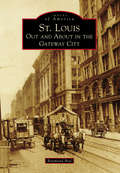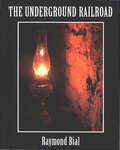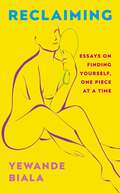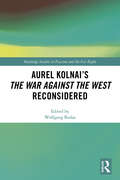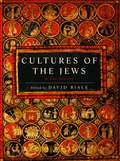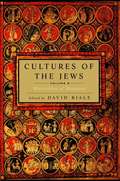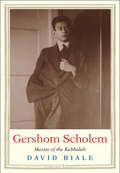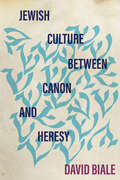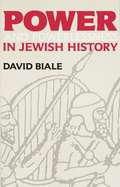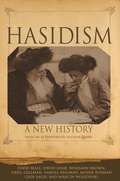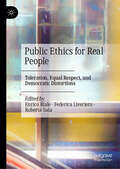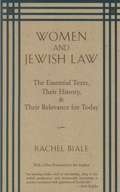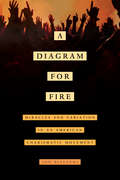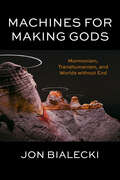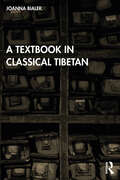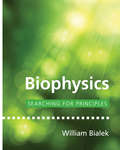- Table View
- List View
Nauvoo: Mormon City on the Mississippi River
by Raymond BialIn 1839, persecuted Mormons fled Missouri, across the Mississippi River, seeking freedom from violence. They hoped to find a safe haven on the banks of the river in an Illinois city that they called Nauvoo, “the city beautiful.”The Mormons did not flourish for long in Nauvoo. In neighboring cities some grew resentful of the prosperity that Joseph Smith and his people were enjoying. Religious misconceptions further fueled hostility toward the Mormons. Would the oft-persecuted Mormons have to flee their city beautiful?Through poignant writing and photographs of Nauvoo today, Raymond Bial tells the story of the city that many Mormons consider to be the wellspring of their religion.
St. Louis: Out and About in the Gateway City (Images of America)
by Raymond BialFounded as a humble trading post along the Mississippi River 250 years ago, St. Louis has since grown into a thriving metropolis. It appears to be a calm city, but like the mighty Mississippi, it has powerful undercurrents. Known as the "Gateway to the West," St. Louis was a port city and home to many manufacturing businesses making everything from shoes to ships. St. Louis, though, is perhaps best known for its breweries and distilleries. St. Louis: Out and About in the Gateway City captures the energy of people bustling along the street, dining out and going to movies, hopping a trolley, swimming, picnicking, clip-clopping along in horse and carriage, ice skating, or driving an automobile. It also touches upon issues of the day that had to be overcome--suffrage, the Great Depression, and civil rights, to name a few--and shows the resilient spirit of the people of St. Louis.
The Super Soybean
by Raymond BialIf there is any such thing as a "super" plant, that plant is the soybean. Used for an amazing variety of things--plastics, fuel, soap, and medicine--soybeans are also a healthy food source for animals and people.
Tenement: Immigrant Life On The Lower East Side
by Raymond BialLife on the Lower East Side was bustling. Immigrants from many European countries had come to make a better life for themselves and their families in the United States. But the wages they earned were so low that they could afford only the most basic accommodations-tenements. Unfortunately, there were few laws protecting the residents of tenements, and landlords took advantage of this by allowing the buildings to become cramped and squalid. There was little the tenants could do; their only other choice was the street. Though most immigrants struggled in these buildings, many overcame a difficult start and saw generations after them move on to better apartments, homes, and lives. Raymond Bial reveals the first, challenging step in this process as he leads us on a tour of the sights and sounds of the Lower East Side, guiding us through the dark hallways, staircases, and rooms of the tenements.
The Underground Railroad
by Raymond BialBy ones, twos, and threes, in the years before the Civil War thousands of enslaved people slipped through the night on their way to freedom, riding the Underground Railroad. Hidden and hunted, the escape of southern slaves to the North remains a compelling event in American history. Within the pages of this book are documented, in prose and elegantly articulate photographs, examples of "stations" on the Railroad, along with images of the routes, lives, and hardships of both the "passengers" and "conductors."
Reclaiming: Essays on finding yourself one piece at a time
by Yewande BialaReclaiming is a brilliantly written and thought-provoking book. Through amazing story telling, Yewande highlights the richness in her culture that so many other black women can relate to. It was extremely gripping right from beginning. -- Oloni'This book highlights the topics and issues we still face in our society daily, including some that I've struggled with myself. I think it's hugely important we keep having these conversations and this book certainly helps do just that.' -- Olivia Bowen'Reclaiming is comforting, yet inspiring. Yewande has admirably opened up about her experiences growing up and facing difficulties such as colourism and mental health problems, how she's so bravely over come them and found her voice. I whole heartedly recommend this book to anyone mixed up in this complex generation looking for a relatable, authentic and aspirational read.' -- Demi Jones'I absolutely loved it. I think it's clear to anyone who's read Yewande's earlier essay that she's a phenomenal writer and talent, and this is an incredible debut. Empowering, instructive, loving & honest...the kind of text that makes me excited to be a reader' -- Beth McColl'I'm so proud of the strong, intelligent woman Yewande is. She is using her platform and own experiences to educate, inspire, empower and to help others!' -- Amy Hart'A beautiful book - very relatable... a beautiful form of art.' -- Murad Merali'Reclaiming is more than just a book title. It's a statement. It's power. It's an announcement. It's a force I feel Yewande is making on behalf of all men and women of colour. Thank you Yewande.' -- Rachel Finni_____________________________________________________I am more than enough, and I am perfect with all my imperfections.In 2021, Yewande Biala wrote a searing viral essay on the debilitating effects of having your name constantly mispronounced or changed.From the incredible response to the essay, it was clear that there are still so many conversations to be had around the way that we as a society respond to each other, and the direct effect it is having on our sense of self. Reclaiming consists of interlinked essays covering a wide breadth of topics from struggling with your body image and mental health to navigating social media and dating apps without damaging your self-esteem.Each essay covers a different topic, affirming that maintaining your sense of self in a world that is not supportive of you is difficult, but not impossible. Nuanced, distinctly sharp, and full of wit, Reclaiming holds a mirror up to us all, and encourages us to like what we see.
Reclaiming: Essays on finding yourself one piece at a time ‘Yewande offers piercing honesty… a must-read book for anyone who has been on social media.’- The Skinny
by Yewande BialaRECLAIMING will cover a wide breadth of topics from the specific microaggressions black women encounter on dating apps to navigating a career that may seem impossible. Every step of Yewande's writing affirms that maintaining your sense of self in a world that is not supportive of you is difficult, but not impossible. The audiobook will be a thought provoking, sensitive, challenging and deeply moving collection of essays covering everything from identity to love and career choices, published in May 2022.RECLAIMING will serve as an inspiring love letter for anyone who has ever felt out of place, but strives to find success in every aspect of their lives.(P) 2022 Hodder & Stoughton Limited
Forever 17: Coming of Age in the German Asylum System (Ethnographic Encounters and Discoveries)
by Ulrike BialasAn exploration of how age affects the experience and life prospects of asylum-seekers in Germany. Heartbreaking images of children in distress have propelled some of the most urgent calls for action on immigration crises, and that compassion often affects how state asylum policies are structured. In Germany, for example, the immigration system is engineered to protect minors, which leads to unintended consequences for migrants. In Forever 17, Ulrike Bialas follows young African and Central Asian migrants in Germany as they navigate that system. Without official paperwork or even, in many cases, knowledge of their exact age, migrants must decide how to present their complicated life stories to government officials. They quickly realize that their age can have an outsized effect on the outcome of their cases. A migrant under 18, for example, can’t be deported, but might instead be placed in a youth home, where they will be subject to strict curfew laws. An 18-year-old adult, on the other hand, can get permission to work, but not opportunities to go to school. Regardless of their age—actual or assumed—migrants face great difficulties. Those classified as minors must live with the psychological burden of being treated like children, while those classified as adults must live without the practical support and legal protections reserved for minors. The significance of age stands in stark contrast to the ambiguities inherent in its determination. Though Germany’s infamous bureaucracy is designed to issue clear statements about refugees and migrants, the truth is often more complicated, and officials are forced to grapple with the difficult implications of their decisions. Ultimately, Bialas shows, policies surrounding asylum seekers fall dramatically short of their humanitarian ideals. Even those policies designed to help the most vulnerable can lead to outcomes that drastically limit the possibilities for migrants in real need of protection and keep them from leading fulfilling lives.
Aurel Kolnai's The War AGAINST the West Reconsidered (Routledge Studies in Fascism and the Far Right)
by Wolfgang BialasAurel Kolnai’s The War against the West remains one of the most insightful analyses of Nazi thought ever written. First published in 1938 it was a revelation for many readers. Quite different in tone and approach from most other analyses of Nazism available in English, it was remarkable for the thoroughness with which it discussed the writings of Nazi thinkers and for the seriousness with which it took their views. In this edited collection published eighty years after the original book, a team of distinguished scholars reassess this classic text and also consider its continued relevance to contemporary politics. They address issues such as the comparison of Nazism and communism, anti-Semitism, British and American perceptions of the Reich before the war and the Nazi legal theory of Carl Schmitt. This book is a vital source for historians of Nazism and Fascism.
Europe in the World: EU Geopolitics and the Making of European Space (Critical Geopolitics)
by Luiza BialasiewiczThis edited volume provides an innovative contribution to the debate on contemporary European geopolitics by tracing some of the new political geographies and geographical imaginations emergent within - and made possible by - the EU's actions in the international arena. Drawing on case studies that range from the Arctic to East Africa, the nine empirical chapters provide a critical geopolitical reading of the ways in which particular places, countries, and regions are brought into the EU's orbit and the ways in which they are made to work for 'EU'rope. The analyses look at how the spaces of 'EU'ropean power and actorness are narrated and created, but also at how 'EU'rope's discursive (and material) strategies of incorporation are differently appropriated by local and regional elites, from the southern shores of the Mediterranean to Eastern Europe and the Balkans. The question of EU border management is a particularly important concern of several contributions, highlighting some of the ways in which the Union's border-work is actively (re)making the European space.
Cultures of the Jews: A New History
by David BialeWho are "the Jews"? Scattered over much of the world throughout most of their three-thousand-year-old history, are they one people or many? How do they resemble and how do they differ from Jews in other places and times? What have their relationships been to the cultures of their neighbors? To address these and similar questions, twenty-three of the finest scholars of our day--archaeologists, cultural historians, literary critics, art historians , folklorists, and historians of relation, all affiliated with major academic institutions in the United States, Israel, and France--have contributed their insight to Cultures of the Jews. The premise of their endeavor is that although Jews have always had their own autonomous traditions, Jewish identity cannot be considered immutable, the fixed product of either ancient ethnic or religious origins. Rather, it has shifted and assumed new forms in response to the cultural environment in which the Jews have lived. Building their essays on specific cultural artifacts--a poem, a letter, a traveler's account, a physical object of everyday or ritual use--that were made in the period and locale they study, the contributors describe the cultural interactions among different Jews--from rabbis and scholars to non-elite groups, including women--as well as between Jews and the surrounding non-Jewish world. Part One, "Mediterranean Origins," describes the concept of the "People" or "Nation" of Israel that emerges in the Hebrew Bible and the culture of the Israelites in relation to that of the Canaanite groups. It goes on to discuss Jewish cultures in the Greco-Roman world, Palestine during the Byzantine period, Babylonia, and Arabia during the formative years of Islam. Part Two, "Diversities of Diaspora," illuminates Judeo-Arabic culture in the Golden Age of Islam, Sephardic culture as it bloomed first if the Iberian Peninsula and later in Amsterdam, the Jewish-Christian symbiosis in Ashkenazic Europe and in the Polish-Lithuanian Commonwealth, the culture of the Italian Jews of the Renaissance period, and the many strands of folklore, magic, and material culture that run through diaspora Jewish history. Part Three, "Modern Encounters," examines communities, ways of life, and both high and fold culture in Western, Central, and Eastern Europe, the Ladino Diaspora, North Africa and the Middle East, Ethiopia, Zionist Palestine and the State of Israel, and, finally, the United States. Cultures of the Jews is a landmark, representing the fruits of the present generation of scholars in Jewish studies and offering a new foundation upon which all future research into Jewish history will be based. Its unprecedented interdisciplinary approach will resonate widely among general readers and the scholarly community, both Jewish and non-Jewish, and it will change the terms of the never-ending debate over what constitutes Jewish identity.
Cultures of the Jews, Volume 2
by David BialeScattered over much of the world throughout most of their history, are the Jews one people or many? How do they resemble and how do they differ from Jews in other places and times? What have their relationships been to the cultures of their neighbors? To address these and similar questions, some of the finest scholars of our day have contributed their insights to Cultures of the Jews, a winner of the National Jewish Book Award upon its hardcover publication in 2002. Constructing their essays around specific cultural artifacts that were created in the period and locale under study, the contributors describe the cultural interactions among different Jews-from rabbis and scholars to non-elite groups, including women-as well as between Jews and the surrounding non-Jewish world. What they conclude is that although Jews have always had their own autonomous traditions, Jewish identity cannot be considered the fixed product of either ancient ethnic or religious origins. Rather, it has shifted and assumed new forms in response to the cultural environment in which the Jews have lived.Diversities of Diaspora, the second volume in Cultures of the Jews, illuminates Judeo-Arabic culture in the Golden Age of Islam; Sephardic culture as it bloomed first on the Iberian Peninsula and later in Amsterdam; and the Jewish-Christian symbiosis in Ashkenazic Europe. It also discusses Jewish culture in the Polish-Lithuanian Commonwealth; the culture of the Italian Jews of the Renaissance period; and representations of folklore and material culture through childbirth rituals throughout the Jewish diaspora.From the Trade Paperback edition.
Gershom Scholem: Master of the Kabbalah (Jewish Lives)
by David BialeA new biography of the seminal twentieth-century historian and thinker who pioneered the study of Jewish mysticism and profoundly influenced the Zionist movement Gershom Scholem (1897–1982) was perhaps the foremost Jewish intellectual of the twentieth century. Pioneering the study of Jewish mysticism as a legitimate academic discipline, he overturned the rationalist bias of his predecessors and revealed an extraordinary world of myth and messianism. In his youth, he rebelled against the assimilationist culture of his parents and embraced Zionism as the vehicle for the renewal of Judaism in a secular age. He moved to Palestine in 1923 and participated in the creation of the Hebrew University, where he was a towering figure for nearly seventy years. David Biale traces Scholem’s tumultuous life of political activism and cultural criticism, including his falling-out with Hannah Arendt over the Eichmann trial. Mining a rich trove of diaries, letters, and other writings, Biale shows that his subject’s inner life illuminates his most important writings. Scholem emerges as a passionately engaged man of his times—a period that encompassed two world wars, the rise of Nazism, and the Holocaust.
Jewish Culture between Canon and Heresy (Stanford Studies in Jewish History and Culture)
by David BialeThis career-spanning anthology from prominent Jewish historian David Biale brings over a dozen of his key essays together for the first time. These pieces, written between 1974 and 2016, are all representative of a method Biale calls "counter-history": "the discovery of vital forces precisely in what others considered marginal, disreputable and irrational." The themes that have preoccupied Biale throughout the course of his distinguished career—in particular power, sexuality, blood, and secular Jewish thought—span the periods of the Bible, late antiquity, and the Middle Ages to the twentieth century. Exemplary essays in this volume argue for the dialectical relationship between modernity and its precursors in the older tradition, working together to "brush history against the grain" in order to provide a sweeping look at the history of the Jewish people. This volume of work by one of the boldest and most intellectually omnivorous Jewish thinkers of our time will be essential reading for scholars and students of Jewish studies.
Not in the Heavens: The Tradition of Jewish Secular Thought
by David BialeThe story of the origins and development of a Jewish form of secularismNot in the Heavens traces the rise of Jewish secularism through the visionary writers and thinkers who led its development. Spanning the rich history of Judaism from the Bible to today, David Biale shows how the secular tradition these visionaries created is a uniquely Jewish one, and how the emergence of Jewish secularism was not merely a response to modernity but arose from forces long at play within Judaism itself.Biale explores how ancient Hebrew books like Job, Song of Songs, and Esther downplay or even exclude God altogether, and how Spinoza, inspired by medieval Jewish philosophy, recast the biblical God in the role of nature and stripped the Torah of its revelatory status to instead read scripture as a historical and cultural text. Biale examines the influential Jewish thinkers who followed in Spinoza's secularizing footsteps, such as Salomon Maimon, Heinrich Heine, Sigmund Freud, and Albert Einstein. He tells the stories of those who also took their cues from medieval Jewish mysticism in their revolts against tradition, including Hayim Nahman Bialik, Gershom Scholem, and Franz Kafka. And he looks at Zionists like David Ben-Gurion and other secular political thinkers who recast Israel and the Bible in modern terms of race, nationalism, and the state.Not in the Heavens demonstrates how these many Jewish paths to secularism were dependent, in complex and paradoxical ways, on the very religious traditions they were rejecting, and examines the legacy and meaning of Jewish secularism today.
Power and Powerlessness in Jewish History
by David BialeTo shed light on the tensions he observed between Jewish perceptions of power versus political realities which "are often the cause of misguided political decisions," like Israel's Lebanese War Biale analyzes Jewish history from the point of view of politics and power. The author of Gershom Scholem: Kabbalah and Counter-History here challenges the conventions of what he terms the Jewish "mythical past": the anachronistic interpretation that the Diaspora, which occurred between the fall of an independent Jewish commonwealth in A.D. 70 and the rebirth of the State of Israel in 1948, was politically impotent, and, conversely, that the First and Second Temple periods were eras of full Jewish national sovereignty.
Hasidism: A New History
by David Biale Arthur Green Moshe Rosman David Assaf Samuel Heilman Benjamin Brown Uriel Gellman Gadi Sagiv Marcin WodzińskiThe first comprehensive history of the pietistic movement that shaped modern JudaismThis is the first comprehensive history of the pietistic movement that shaped modern Judaism. The book’s unique blend of intellectual, religious, and social history offers perspectives on the movement’s leaders as well as its followers, and demonstrates that, far from being a throwback to the Middle Ages, Hasidism is a product of modernity that forged its identity as a radical alternative to the secular world.Hasidism originated in southeastern Poland, in mystical circles centered on the figure of Israel Ba'al Shem Tov, but it was only after his death in 1760 that a movement began to spread. Challenging the notion that Hasidism ceased to be a creative movement after the eighteenth century, this book argues that its first golden age was in the nineteenth century, when it conquered new territory, won a mass following, and became a mainstay of Jewish Orthodoxy. World War I, the Russian Revolution, and the Holocaust decimated eastern European Hasidism. But following World War II, the movement enjoyed a second golden age, growing exponentially. Today, it is witnessing a remarkable renaissance in Israel, the United States, and other countries around the world.Written by an international team of scholars, Hasidism is a must-read for anyone seeking to understand this vibrant and influential modern Jewish movement.
Thinking Impossibilities
by David Biale Robert S. WestmanIntellectuals rarely make a significant impact on one field of scholarship let alone several, yet Amos Funkenstein (1937-1995) displayed an intellectual range that encompassed several disciplines and broke new ground across seemingly impenetrable scholarly boundaries. The philosophy of history from antiquity to modernity, medieval and early modern history of science, medieval scholasticism, Jewish history in all of its periods - these are all areas in which he made lasting contributions. Thinking Impossibilities brings together Funkenstein's colleagues, friends, and former students to engage with important aspects of his intellectual legacy.Funkenstein's diverse interests were bound together by common figures of thought, especially the search for pre-modern intellectual groundings of modern ideas and how the seeming 'impossibilities' of one historical moment might become positive resources of conceptual construction and development in another. The essays in this volume take up major themes in European intellectual history, and examine them through the unique lens that Funkenstein himself employed during his career. Of particular interest are ways in which topics of Jewish history are engaged with the larger field of the history of ideas in the West. Richly interdisciplinary and full of fresh insights, Thinking Impossibilities is a fitting tribute to an important twentieth-century scholar.
Public Ethics for Real People: Toleration, Equal Respect, and Democratic Distortions
by Enrico Biale Federica Liveriero Roberta SalaThis book develops an innovative paradigm of public ethics that provides a unique insight into three central themes – recognition, social conflicts and democratic distortions – while critically celebrating the work of Anna Elisabetta Galeotti. In honor of her seventieth birthday, this edited collection brings together leading scholars in the field of normative political philosophy to reason upon the main strands of her research. The volume envisages a general paradigm of public ethics to deal with social conflicts that involve structural dynamics and deliberative deficits. While addressing diverse yet interrelated topics, all the contributors demonstrate a commitment to the ideal that, in the construction and reform of social and political institutions, respect for individuals as the makers of their own lives should act as the guiding principle. Against this backdrop, this volume strikes a difficult-to-reach balance between refined theorizing over classical themes of the liberal tradition and the ability to open these classic themes to new strands of research. The collection deals with crucial contemporary challenges to the democratic order, such as democratic backsliding and the breach of social trust, legal and democratic fights over free speech, multicultural clashes in highly diverse societies, and reparation for historical wrongs.
Women and Jewish Law: The Essential Texts, Their History, and Their Relevance for Today
by Rachel BialeHow has a legal tradition determined by men affected the lives of women? What are the traditional Jewish views of marriage, divorce, sexuality, contraception, abortion? Women and Jewish Law gives contemporary readers access to the central texts of the Jewish religious tradition on issues of special concern to women. Combining a historical overview with a thoughtful feminist critique, this pathbreaking study points the way for "informed change" in the status of women in Jewish life.From the Trade Paperback edition.
A Diagram for Fire: Miracles and Variation in an American Charismatic Movement
by Jon BialeckiWhat is the work that miracles do in American Charismatic Evangelicalism? How can miracles be unanticipated and yet worked for? And finally, what do miracles tell us about other kinds of Christianity and even the category of religion? A Diagram for Fire engages with these questions in a detailed sociocultural ethnographic study of the Vineyard, an American Evangelical movement that originated in Southern California. The Vineyard is known worldwide for its intense musical forms of worship and for advocating the belief that all Christians can perform biblical-style miracles. Examining the miracle as both a strength and a challenge to institutional cohesion and human planning, this book situates the miracle as a fundamentally social means of producing change—surprise and the unexpected used to reimagine and reconfigure the will. Jon Bialecki shows how this configuration of the miraculous shapes typical Pentecostal and Charismatic religious practices as well as music, reading, economic choices, and conservative and progressive political imaginaries.
Machines for Making Gods: Mormonism, Transhumanism, and Worlds without End
by Jon BialeckiThe Mormon faith may seem so different from aspirations to transcend the human through technological means that it is hard to imagine how these two concerns could even exist alongside one another, let alone serve together as the joint impetus for a social movement. Machines for Making Gods investigates the tensions between science and religion through which an imaginative group of young Mormons and ex-Mormons have found new ways of understanding the world.The Mormon Transhumanist Association (MTA) believes that God intended humanity to achieve Mormonism’s promise of theosis through imminent technological advances. Drawing on a nineteenth-century Mormon tradition of religious speculation to reimagine Mormon eschatological hopes as near-future technological possibilities, they envision such current and possible advances as cryonic preservation, computer simulation, and quantum archeology as paving the way for the resurrection of the dead, the creation of worlds without end, and promise of undergoing theosis—of becoming a god. Addressing the role of speculation in the anthropology of religion, Machines for Making Gods undoes debates about secular transhumanism’s relation to religion by highlighting the differences an explicitly religious transhumanism makes.Charting the conflicts and resonances between secular transhumanism and Mormonism, Bialecki shows how religious speculation has opened up imaginative horizons to give birth to new forms of Mormonism, including a particular progressive branch of the faith and even such formations as queer polygamy. The book also reveals how the MTA’s speculative account of God and technology together has helped to forestall some of the social pressure that comes with apostasy in much of the Mormon Intermountain West.A fascinating ethnography of a group with much to say about crucial junctures of modern culture, Machines for Making Gods illustrates how the scientific imagination can be better understood when viewed through anthropological accounts of myth.
A Textbook in Classical Tibetan
by Joanna BialekA Textbook in Classical Tibetan is the first comprehensive course book in the Classical Tibetan language written in English. The textbook describes the grammar of pre-16th-century Classical Tibetan works for beginners and students of intermediate level. It is intended to cover the most essential topics that can be mastered within two semesters of an academic class. Classical Tibetan is a written Middle Tibetan language that has been in use in Tibet from the 9th century. Until the early 20th century it served all purposes, from administrative, to medical, to religious. Nowadays Classical Tibetan remains an important part of religious identity and services for communities also outside of cultural Tibet, foremost in India, Nepal, and Bhutan, but also elsewhere, most importantly in Europe, North America and Australia. The main body of the textbook consists of an introduction to the Tibetan script, eighteen lessons, and a reading section. Each lesson elucidates several grammatical topics which are followed by an exercise and a word list. The chapter readings contain four supplementary readings. In addition to the main parts of the textbook, a brief introduction to Tibetic languages provides linguistic context for the language taught in the textbook, whereas the chapter Translations of Exercises and Readings contains translations and explanatory notes to the exercises provided at the end of each lesson, as well as to the readings. A Textbook in Classical Tibetan is essential reading for both undergraduate and graduate students without any knowledge of Classical Tibetan, but also for those who would like to deepen their experience of the language by reading annotated excerpts from well-known pieces of Tibetan literature.
Biophysics
by William BialekInteractions between the fields of physics and biology reach back over a century, and some of the most significant developments in biology--from the discovery of DNA's structure to imaging of the human brain--have involved collaboration across this disciplinary boundary. For a new generation of physicists, the phenomena of life pose exciting challenges to physics itself, and biophysics has emerged as an important subfield of this discipline. Here, William Bialek provides the first graduate-level introduction to biophysics aimed at physics students. Bialek begins by exploring how photon counting in vision offers important lessons about the opportunities for quantitative, physics-style experiments on diverse biological phenomena. He draws from these lessons three general physical principles--the importance of noise, the need to understand the extraordinary performance of living systems without appealing to finely tuned parameters, and the critical role of the representation and flow of information in the business of life. Bialek then applies these principles to a broad range of phenomena, including the control of gene expression, perception and memory, protein folding, the mechanics of the inner ear, the dynamics of biochemical reactions, and pattern formation in developing embryos. Featuring numerous problems and exercises throughout, Biophysics emphasizes the unifying power of abstract physical principles to motivate new and novel experiments on biological systems. Covers a range of biological phenomena from the physicist's perspective Features 200 problems Draws on statistical mechanics, quantum mechanics, and related mathematical concepts Includes an annotated bibliography and detailed appendixes Instructor's manual (available only to teachers)
The Domestic Context Of Soviet Foreign Policy
by Seweryn BialerThis volume highlights those aspects of Soviet internal dynamics that influence foreign policy and international relationships. It reflects a growing awareness of the importance of internal factors as a critical determinant shaping the making and effectiveness of Soviet foreign policy.

